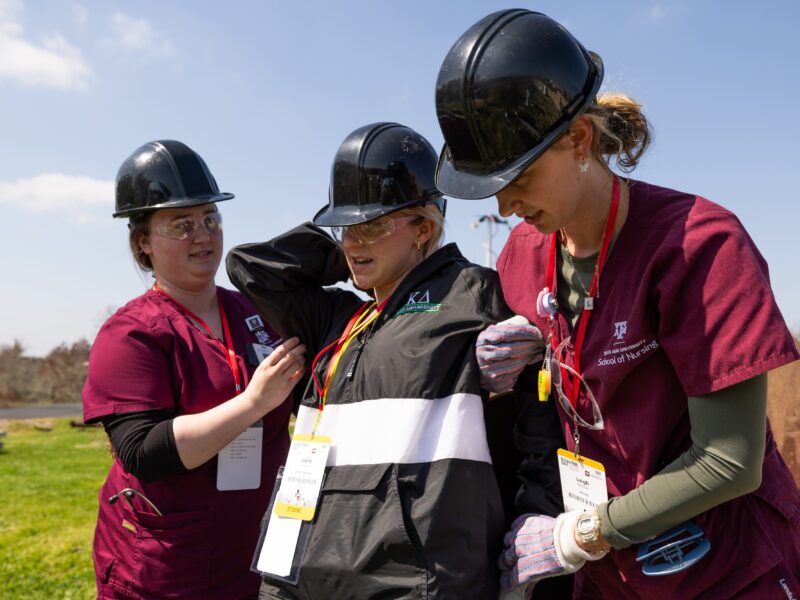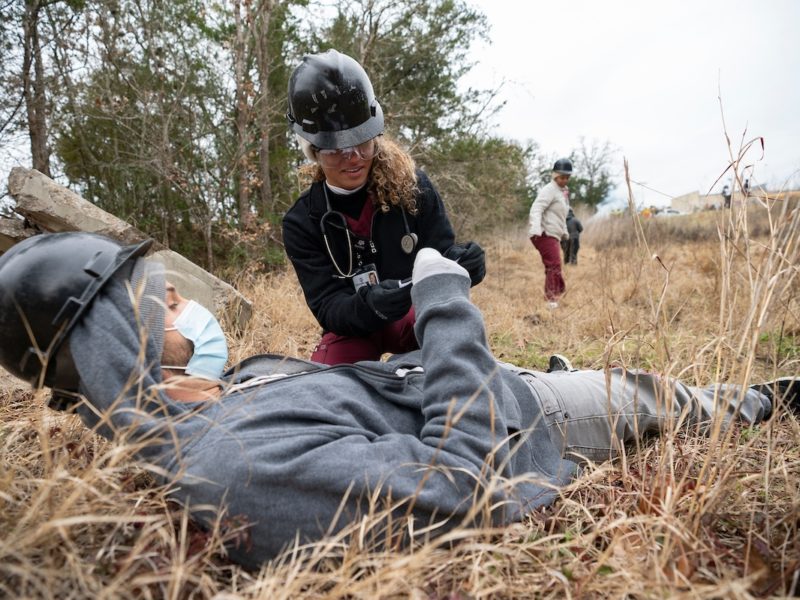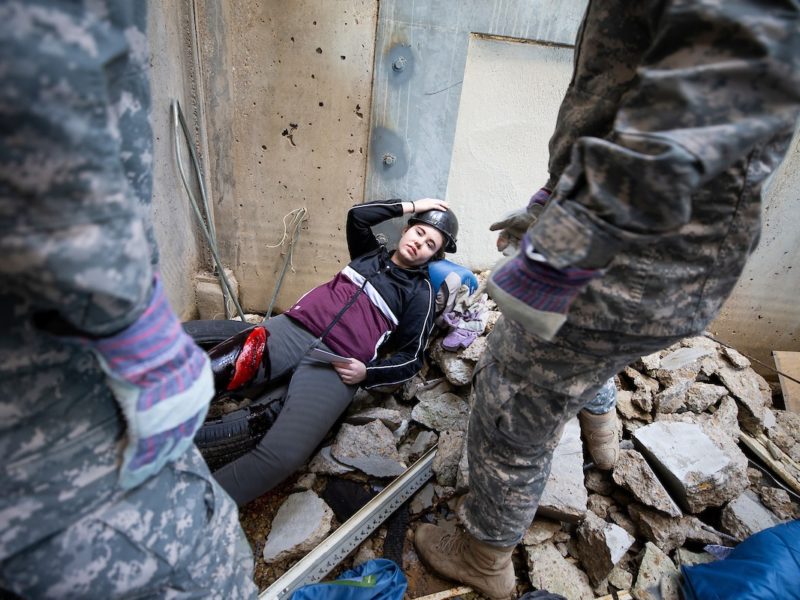Texas A&M Health Prepares Next Generation Of Emergency Medical Responders
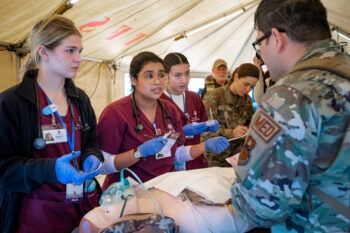
As the world has seen an increase in mass disasters — from the earthquakes in Turkey and Syria to man-made disasters such as the train derailment and chemical spill in Ohio — having health care professionals trained to respond to these emergencies has become even more critical. For 15 years, the Texas A&M University Health Science Center (Texas A&M Health) has been at the forefront of this training with its annual Disaster Day simulation. On Friday, March 3, the student-led event welcomed more than 700 Texas A&M students, over 85 faculty and staff, and countless emergency response professionals to participate in the day-long disaster simulation.
Started by the Texas A&M School of Nursing in 2008, the event has grown from a small group at a local church to nearly 1,000 people orchestrating and taking part in the mass simulation. Today, the event is held at Texas A&M Engineering Extension Service’s (TEEX) Disaster City®. Students from Texas A&M schools of dentistry, medicine, nursing, pharmacy and public health, as well as athletic training, psychology and veterinary medicine students and the Corps of Cadets participated in this year’s drill.
“This year marks a milestone in the history of this event. As we celebrate 15 years, we have elevated our efforts to further enrich the student experience, which will ultimately serve patients across the state of Texas,” said Christine Kaunas, executive director for Interprofessional Education & Research at Texas A&M Health. “Not only are students practicing collaboratively to improve patient outcomes and learning critical disaster response skills, but they are doing so while faced with a high level of fidelity to a real event.”
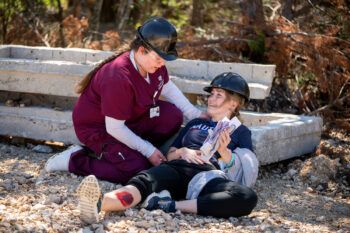
As a student-led event, more than 50 students from Texas A&M work on a planning committee — with guidance from a faculty and staff steering committee — doing everything from organizing student participation and training to creating the case scenarios for the drill.
Each year, a new scenario is selected and kept secret until the day of the event to provide the realism of an unexpected situation. This year’s simulated disaster was a hurricane, and students engaged in triage at the disaster site, patient care at the mock field hospital, mental health care and needs assessment at an evacuation shelter, and disaster management and simulation oversight at Disaster City’s Emergency Operations Training Center.
During the simulation, students take on the role of patients or providers. Students who participate as patients receive makeup, known as moulage, to mimic injuries based on the current scenario. As the drill begins, patients act out the case that they are assigned, while students acting as physicians and nurses do field assessments, then transfer patients to a field hospital for more diagnosis and treatment. Pharmacy students work with providers to determine the medications needed, and psychology students provide the mental health care required of disaster victims. Athletic training and dentistry students provide specialized care in orthopedic and soft tissue trauma, and head and neck injuries, respectively. Public health students manage the disaster to deploy resources and address outbreaks that occur during disasters.
“Many planning hours are spent by the student planning committee and our faculty and staff steering committee to create Disaster Day. It is so satisfying when all the months of planning come to fruition. We hope students walk away with critical training and skills they will remember the rest of their careers,” said Justin Dugie, student planning director for Disaster Day.
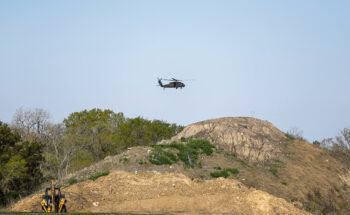
As the event has grown, so has collaboration with corporations and government agencies, such as H-E-B and the Texas Department of Emergency Management. This year, Texas A&M Health collaborated with St. Joseph Health and the United States Military to enhance the simulation. The United States Air Force 59th Air Medical Wing and Texas Air National Guard 136th Airlift Wing provided medical evacuations by airplane, while St. Joseph Health Air Med 12 facilitated airlifts via a helicopter. Students got a first-person perspective on air evacuations, making the simulation more realistic.
“As we continue to grow events like Disaster Day, we understand the value of working with System and government partners, organizations and companies that can bring real world experiences to our students,” said Dr. Jon Mogford, chief executive officer and senior vice president of Texas A&M Health. “These partnerships not only help enhance and expand our students learning experience, but also help us develop relationships and opportunities for future projects and partnerships.”
This article by Dee Dee Grays originally appeared on Vital Record.
